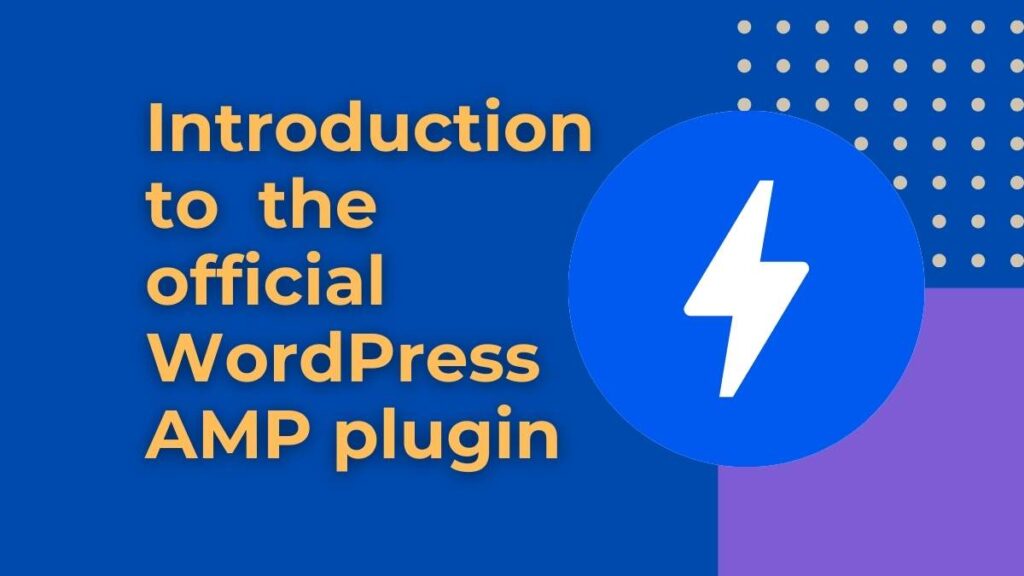Introduction to the official WordPress AMP plugin
AMP is a powerful technology that automatically applies several improvements and best practices to your site, making it easier for you to provide a positive user experience to your visitors.
The official AMP plugin, which is supported by the AMP team, makes it simple to integrate AMP into your WordPress site, easily integrating with the standard publishing routine and allowing for the usage of current themes and plugins.
Advantages of AMP Pages on Your Website
AMP pages are typically 85% faster than traditional mobile pages, which can lead to a number of benefits for businesses, including:
- Increased website engagement: When pages load faster, users are more likely to stay on your site and interact with your content. This can lead to higher click-through rates, conversions, and time spent on site.
- Improved search engine ranking: Google has stated that AMP pages are a ranking signal, so using AMP can help your site rank higher in search results.
- Lower bounce rates: A study by Google found that AMP pages had a 20% lower bounce rate than non-AMP pages. This means that users are less likely to leave your site after landing on an AMP page.
- Increased ad views: AMP pages are more likely to be displayed in the top results of Google Search, which can lead to increased ad views.
- Higher click-through rates: AMP pages have been shown to have higher click-through rates than non-AMP pages. This is because they load faster and are more visually appealing.
In addition to these benefits, AMP pages are also more secure and reliable than traditional mobile pages. They are also supported by a number of major publishers and platforms, including Google, Twitter, and LinkedIn.
WordPress AMP Plugin
The official AMP WordPress plugin is a powerful tool that enables you to create user-first WordPress sites, which are fast, beautiful, safe, engaging, and accessible. A user-first approach ensures that your users have an enjoyable experience, which increases user engagement and your site’s success.
And, contrary to common opinion, AMP is not just for mobile sites (it no longer stands for Accelerated Mobile Pages!). AMP is a completely responsive web component framework, which means you can deliver AMP experiences to your visitors on both mobile and desktop platforms.

Template Modes in Official AMP Plugin
The official AMP plugin enables website owners to provide AMP in three distinct template modes: Standard, Transitional, and Reader. The distinctions between them are in the number of themes employed (one or two) and the number of site variants (non-AMP, AMP).
Each template mode has a unique value proposition and is optimised for specific circumstances within the vast and diverse WordPress environment. And in every situation, the AMP plugin gives the maximum amount of help possible in terms of automating the development of AMP pages and maintaining the AMP option selected.
In a nutshell, the following template modes are available:
Standard Mode
This template mode is optimal because it uses a single theme to serve requests and only has one version of your site: the AMP version. Apart from making your entire website AMP-first, this also offers the added benefit of lowering development and maintenance expenses. This mode is optimal for sites whose theme and plugins are completely AMP-compatible. Additionally, this is a viable alternative if certain components are incompatible with AMP but the site owner has the resources or know-how to fix them. Take a look at our display of websites that use Standard mode.
Transitional Mode
This mode likewise uses a single theme, but each page can have two versions: AMP and non-AMP. The active theme is the one that serves both the AMP and non-AMP versions of a URL. This mode is appropriate if the site’s theme is not entirely AMP compliant but the functional variations between AMP and non-AMP pages are acceptable (due to graceful degradation). In this situation, users accessing the site via mobile devices can access the AMP version, which provides an optimised experience while retaining the non-AMP version’s appearance and feel. Take a look at our collection of websites that use Transitional mode.
Reader Mode
In this mode, two distinct themes are used, one for AMP pages and another for non-AMP pages, resulting in two distinct versions of the site. This mode may be used if the site is utilising an AMP-incompatible theme, although the level of incompatibility is significant in the absence of gradual degradation. Additionally, it’s a smart choice if you’re not technically savvy (or simply don’t want to deal with incompatibilities) and hence desire simplified and robust workflows that enable you to leverage AMP with less effort.
Conclusion
Different modes would be recommended in various instances, depending on your site’s and role’s peculiarities. As you configure the plugin, it will propose the option that is most appropriate for you based on its analysis of your theme and plugins. Additionally, regardless of the mode selected, you can serve all or a piece of your site as AMP. This provides you with the necessary flexibility to begin gradually activating AMP on your site.

